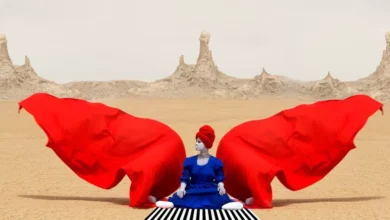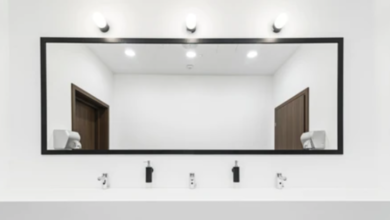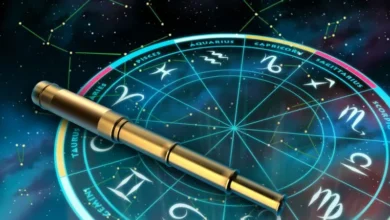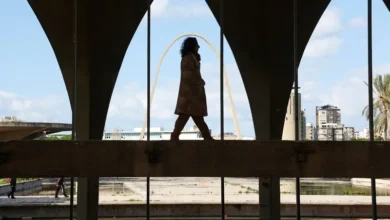Mohammed Sherif: Deep dive into the ancient martial art of ‘Kalarippayat’

‘Kalarippayat,’ originating in the South Indian state of Kerala, is considered “a complete martial art,” as it incorporates unique fighting techniques and scientific exercises based on the traditional understanding of human anatomy – something that the latest findings on exercise science and sports medicine are rediscovering.
“Kalarippayat is also the only martial art in the world that has a comprehensive traditional sports medicine for accidents and sports-related injuries, which is unparalleled in any other system,” said 69-year-old international Kalarippayat gurukkal or master, Chirammal Mohammed Sherif, who has spent more than 55 years, learning and perfecting the intricacies of a tradition and knowledge system that is 5,000 years old and has been transmitted through oral sources and also written down in palm leaf manuscripts, similar to that of Yoga and Ayurveda.
‘Kalari Marma Chikitsa’ or therapy treats the vital body points, releasing positive energy throughout the body.
Sherif Gurukkal’s passion for Kalarippayattu and his dedication to preserving and propagating this traditional martial art have led him to become one of the pioneers in introducing Kalarippayattu to the West.
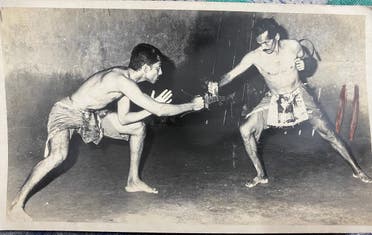
He started teaching European students as far back as 1986 and played a pivotal role in spreading the knowledge and practice of Kalarippayattu across Europe and other countries, with many of his students now teaching this ancient art in countries such as Germany, France, Italy, Latvia, Poland, the UK, Turkey, USA, and Japan.
Sherif Gurukkal is visiting Dubai after having recently toured Europe.
Instead of mythologizing, Sherif Gurukkal is focused on the scientific benefits of Kalari and says that the latest medical findings on the neuromyofascial web (NFW), the fluid-like connective tissue within the human structure that overrides even our nervous system and correlates with the practice of Kalarippayat.
Sherif Gurukkal has also treated and trained world-famous sportspersons – among them, a World Kickboxing champion, an Olympic fencer, marathon runners, and others. He is of the opinion that Kalari treatment and practice are extremely useful in attaining peak fitness, quick recovery from sports injuries, and extending the sporting life of athletes at the highest level.
“The practice of Kalarippayat is very good for the training attributes necessary for almost every sport, particularly football, basketball, tennis, boxing, kickboxing, fencing, and athletics. With the Arabian Gulf region emerging as a center of excellence in sports, Kalari Marma treatment can play a very vital role,” he says.
Most ancient martial art in the world
Kalarippayat, or Kalari, is considered the most ancient martial art in the world. ‘Kalari’ can be translated literally as the place where exercises are taught and ‘payat’ as the art of combat. It is a holistic martial art involving training in armed and unarmed combat and a complete treatment system for injuries.
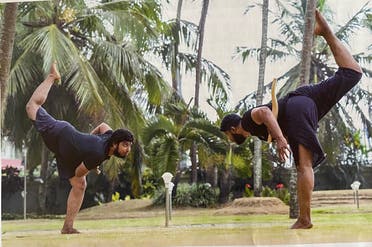
Kalarippayat training, being extremely comprehensive and scientific, allows students to develop high levels of fitness, self-confidence, and technical ability, thereby enabling very effective self-defense.
Traditionally, training is divided into four areas: body control exercises; training with wooden weapons such as longstick, shortstick, otta (in the shape of an elephant tusk); training with metal and sharp-edged weapons (sword, dagger, spear etc); and unarmed combat, using marmas of the vital/vulnerable body points.
The training helps develop abilities like speed, agility, strength, flexibility and coordination. These qualities are needed for a variety of stances, foot movements, kicks, blocks, strikes, and jumps.
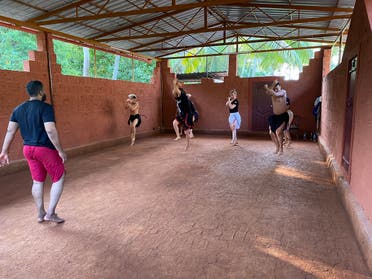
The weapon training, in tandem with a partner, includes striking, blocking, locks and other disarming and controlling techniques that also improve reflexes and focus.
Trained in three styles
Born in a North Kerala family with a warrior lineage of more than 300 years, Sherif was fortunate to train under the best masters of that time who came from authentic lineages from all three styles: Northern style, Southern style, and Central style, all of which are prevalent now.
Having lost his father at the age of seven, Sherif Gurukkal recalls the care and immense love he received from his Kalari teachers through the years, who instilled in him the quality of never giving up, no matter what. “This resolve took me on the path of a relatively obscure martial art at that time, mastering it and spreading it to different countries,” Sherif said.
“The philosophy of Kalari is of patience and perseverance, along with a very positive attitude and the ability to learn from one’s own mistakes,” he said, adding: “The training was very hard in those days: Non-stop training every day for three hours throughout the four months of the monsoon season and undergoing powerful Kalari massage every year for two weeks. This makes your body strong and flexible like a panther.”
In 1986, Sherif Gurukkal started receiving students from Europe. “Apart from being attracted to Indian culture, quite a few of them found out that Kalari helped them find an answer to life’s many challenges, such as troubled childhood, mental issues, and drug addiction. As soon as they started practising, quite a few of whom were depressed, they found out that they could shake off their despondence. Those who were diabetic soon brought the condition under control with a long-term effect,” he further said.
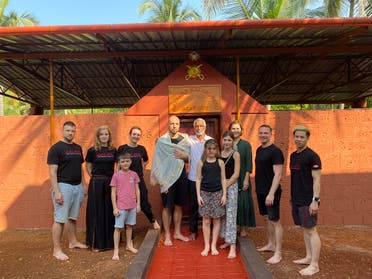
For Sherif Gurukkal, teaching students from the West was a challenge because they wanted to know the ‘why’ of everything. “So, I had to learn more and always keep updating myself – just like a student.”
Recalling his younger days, he says: “I was concentrating more on learning fighting skills, but eventually, I realized I was missing something that I saw my teachers practise. I observed that they were always helping the poor who could not afford modern treatment. They considered it as their duty towards the community. In many cases, Kalari ‘marma’ treatment was highly effective – even more than other systems – cost-wise and also in terms of less time consumed.”
In the past, it was very common in Kerala to approach the Kalari masters for treatment of any sort of neuro-muscular-skeletal injuries because the knowledge for this treatment form was garnered over thousands of years, coupled with first-hand experience of taking care of injuries sustained during the practise of Kalari.
In Europe, too, Sherif Gurukkal finds that Kalari Marma (vital body point) treatment is becoming popular among leading sportspersons as it often helps them avoid surgeries – especially of the knees and the back – which could sometimes end their careers.
“Apart from my own experience as a healer, I have observed that Kalari treatment is highly effective for various types of sports injuries, as well back pain, neck and shoulder issues, migraine, headaches, vertigo, knee pain, tennis elbow, postural problems, proprioception (perception or awareness of the position and movement of the body) issues, emotional problems arising out of physical reasons,” he said.
“The various therapies practised can lead to a dramatic improvement in many common disorders, such as lumbago, rheumatoid arthritis, tendinitis, and cervical spondylosis,” he added.
To further illustrate the point, he says: “For example, a person who gets angry very quickly can be having a neck problem as well as depression, according to the science of Marma.”
He says it has been recently observed that Kalarippayat training and treatment are highly effective for differently-abled children, especially those with autism and ADHD (Attention Deficit Hyperactivity Disorder).
Some of Sherif Gurukkal’s European students are professional athletes who found Kalari training very useful for their specific sport.
Sherif has had the privilege of training and providing sports injury treatments to an impressive roster of international athletes, notably Joppe Lemmens (Germany), two-time world title holder in kickboxing under WAKO (World Association of Kickboxing Organizations); Mark Leo Lemmens (Germany); European kickboxing champion; Jessilyn Morton (USA), marathon runner, winner of Bighorn100; Eduardo Lupiere (Italy), Italian Olympic fencer, under-18 champion in Youth Olympics 2010, under-20 youth world championship 2011, and European Champion 2011, with multiple silver medals in Junior World Championships; Srdjan Jovanovic (Czech Republic), basketball player for the Czech Republic team. Numerous Yoga instructors were also treated by him.
“Leading kickboxing champion Joppe Lemmens suffered multiple injuries during training and fighting. Doctors advised him to stop performing. However, our treatment helped him win the world title,” says Sherif Gurukkal, who believes that Kalari Marma treatment “is a boon for humanity in terms of pain relief.”
“More professionals are coming forward to learn Kalari Marma, along with Kalarippayat training,” he added.
Some of Sherif Gurukkal’s advanced students include Steffen Geissler, a manipulative and physiotherapist from Hannover, Germany, for the past 28 years; Nelly Dargent, an osteopath for the past 18 years from Toulouse, France; Gero Gorancy, exercise science specialist from Hamburg, Germany; and Kamila Ewa Hitzer, a massage therapist from Hamburg, Germany.
Importance of the fascial web
Sherif Gurukkal says today, there is a newfound interest in the medical field in the study of the fascial system of the human body, also known as the fascial web, in relation to the health of the individual.
Modern medical science has come to realize the vastness of this neuromyofascial web (NFW) within the human body, and since then, researchers throughout the world have been investigating the significance of this discovery. Much more research is needed to clearly identify the role of NFW, but it appears the fascial web communicates joint position sense and even muscular tension faster than the nervous system.
Interestingly, Sherif Gurukkal notes that Kalari Marma treatment reaches deep into the body and works on the muscles, ligaments, bones and the Marma points located under the fascia, predated thousands of years of modern fascia-based forms of therapy.
“This knowledge was part and parcel of our society in Kerala for thousands of years and integrated through the practise of Kalarippayat and its parallel Kalari Marma treatment,” Sherif said.
The massage practice in Kalarai Marma treatment is paramount in the application of the concept of rehydration of the body. Undergoing this treatment for a prescribed period once a year restores body functions and facilitates overall well-being.
The theory of Kalari highlights the physical substrate of an energetic body. By applying pressure through massage and acupressure, it can not only release adhesions and tensions in the gross body, helping one to return to normal function, but can also open up the nodes in the body and facilitate the return of energy flow within an individual’s body. In the same way, martial arts trains a practitioner to attack and defend these Marma points, as this is the simplest way to stop the aggression of any opponent without causing any lasting harm.
Just as acupressure to the Marma point encourages energy flow, a correctly aimed attack can hinder energy flow, leading to numbness, paralysis, pain and /or loss of consciousness.
A revival technique can later be applied to return the aggressor to normal function. This way, there is no lasting harm.
“In both martial and healing art, there is a deep understanding of the NFW and expert knowledge on how to keep it in good condition. This knowledge remains intact to a great extent in the stronger lineages of Kalarippayat in Kerala and those practitioners carry an understanding that may prove vital in our future investigation of this body-wide intelligence,” says Sherif Gurukkal.
Unlike modern anatomical understanding, muscles are not seen as segments but as an interconnected chain. So, if one chain is affected, it gradually affects all other chains.
“Therefore, if you had an ankle sprain in the past, it will affect this chain, gradually producing knee pain, then back pain, and possibly the shoulder will gradually be affected, leading to migraine attacks. It all started from an ankle sprain, which was not treated properly,” he says.
International recognition
Sherif Gurukkal has donned the role of a cultural ambassador. He was sponsored by the Indian Council for Cultural Relations (ICCR) under the Ministry of External Affairs, representing India and its rich martial heritage at prestigious platforms abroad, from the East to the West. He has also been featured in leading martial arts media and publications.
“I have a dream to have an international center for Kalari Marma treatment in Dubai, addressing sports injuries to athletes from all over the world because the UAE and the Gulf countries are promoting sports and tourism in a big way that is creating waves internationally,” he reasoned.
Sherif Gurukkal’s journey is a testament to his unwavering commitment to preserving, promoting and advancing the ancient art of Kalarippayattu. Through his tireless efforts, he has not only showcased the rich cultural heritage of India but has also inspired countless individuals to embrace the profound wisdom and grace of this form of martial art.
His contributions continue to resonate globally, leaving an indelible mark on the world of martial arts and healing practices.
